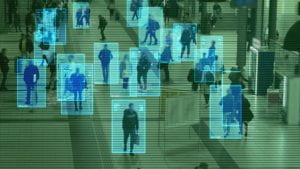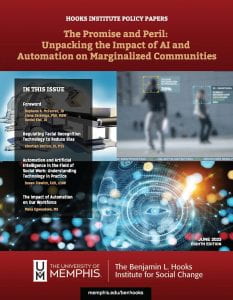January 20, 2025, is the national holiday celebrating the birthday of civil rights icon Dr. Martin Luther King Jr. On this day, we reflect not only on the impactful life King led but also on the enduring legacy he left—a legacy that remains integral to the progress of not just Black Americans but also marginalized communities across the United States who have benefitted from the battles he and many others fought for civil rights and justice.
Although President Abraham Lincoln issued the Emancipation Proclamation on January 1, 1863, declaring freedom for enslaved Africans, true liberation was slow and fraught with setbacks. At the conclusion of the American Civil War, the Reconstruction era (1865–1877) brought significant, albeit brief, advancements for formerly enslaved Africans. Key achievements during this time included the ratification of the 13th, 14th, and 15th Amendments to the U.S. Constitution between 1865 and 1870. These amendments abolished slavery (13th), established birthright citizenship and equal protection under the law (14th), and granted Black men the right to vote while prohibiting racial discrimination in voting (15th). Despite these strides, the era’s progress was short-lived. As Reconstruction ended, the rise of Jim Crow laws across the United States systematically dismantled these hard-fought gains.
From the late 19th century until approximately 1968, Jim Crow laws enforced racial segregation in cities and states across the country. These laws, named after a minstrel show character (Morris, 2021), institutionalized discrimination and segregation in nearly every aspect of life, including separate water fountains, bathrooms, schools, waiting areas, and even laws restricting Black people from entering certain towns after dark, known as “Sundown Towns” (Loewen, 2018).
Amid this backdrop of systemic oppression emerged Dr. Martin Luther King Jr: a pastor’s son who became one of the most influential leaders of the civil rights movement. While figures like Marcus Garvey advocated for emigration from the United States and Malcolm X often promoted a more militant approach, King championed nonviolent resistance. His methods disrupted systems of oppression by targeting their economic structures, leveraging boycotts and other nonviolent protests as powerful tools for change.
Dr. King’s pivotal role in the civil rights movement began in 1955, catalyzed by the actions of two Black women, Claudette Colvin and Rosa Parks, who refused to give up their seats on segregated buses. The Montgomery Bus Boycott, which lasted 385 days, became a landmark event that brought King to national prominence. The boycott inflicted significant financial losses on Montgomery’s bus companies, local businesses, and city finances. During this time, King’s home was bombed, and he was arrested for minor traffic violations, demonstrating the personal sacrifices he endured for the movement. Ultimately, the U.S. District Court ruled in favor of desegregating Montgomery’s buses, marking a significant victory for civil rights activists.
In 1961, King led the Albany Movement in Georgia, and in 1963, he spearheaded the Birmingham Campaign in Alabama. Supported by the Southern Christian Leadership Conference (SCLC), King organized sit-ins and protests to challenge racial segregation and economic injustice. In Birmingham, nonviolent protesters faced brutal repression, including high-pressure water hoses and police dogs. While imprisoned in Birmingham, King wrote his famous “Letter from Birmingham Jail,” articulating the moral imperative for civil disobedience against unjust laws. His resilience and leadership in Birmingham inspired national and international attention to the civil rights struggle.
One of King’s most iconic moments occurred on August 28, 1963, during the March on Washington for Jobs and Freedom. Joined by leaders from the NAACP, the National Urban League, the Brotherhood of Sleeping Car Porters, the Student Nonviolent Coordinating Committee (SNCC), and the Congress of Racial Equality, King delivered his historic “I Have a Dream” speech. Standing before the Lincoln Memorial, he envisioned a nation where people of all races would live in equality, judged not by the color of their skin but by the content of their character.
At the age of 35, Martin Luther King Jr. accepted the Nobel Peace Prize, an honor that recognized his remarkable contributions as an agent of change and as the face of the Civil Rights Movement in the United States. This recognition highlighted how the world was watching the events unfolding in America and how standing up against oppressive laws could be achieved through nonviolent means. In his Nobel Peace Prize acceptance speech, Martin Luther King Jr. reflected on the paradox of technological progress and moral regression, stating:
Yet, in spite of these spectacular strides in science and technology, and still unlimited ones to come, something basic is missing. There is a sort of poverty of the spirit which stands in glaring contrast to our scientific and technological abundance.
The richer we have become materially, the poorer we have become morally and spiritually. We have learned to fly the air like birds and swim the sea like fish, but we have not learned the simple art of living together as brothers.
King’s words emphasized his concern about the rapid pace of technological advancement contrasted with the lack of compassion and unity among humanity. This dissonance deeply troubled him, not only for the future of the United States but for the global community. Martin Luther King Jr.’s relentless fight for both equality and equity extended beyond Black Americans; it was a universal struggle for justice that inspired people of all races, religions, and creeds. His efforts, along with those of many unnamed and unsung heroes, created the foundation on which countless others would stand. Ultimately, it was this fight for civil rights that Martin Luther King Jr. loved and sacrificed his life for.
Tragically, on April 4, 1968, Dr. Martin Luther King Jr. was assassinated at the Lorraine Motel in Memphis, Tennessee, where he had been advocating for Black sanitation workers demanding fair wages and working conditions. His untimely death left an indelible mark on the nation, solidifying his legacy as a martyr for justice and equality.
This Forum Post is not meant to be comprehensive biography of Martin Luther King Jr.’s life but rather a moment to reflect on his pivotal contributions to the civil rights movement and the sacrifices made to secure the freedoms many enjoy today. As we honor his memory, it is fitting to revisit a passage from his iconic “I Have a Dream” speech:
I say to you today, my friends, so even though we face the difficulties of today and tomorrow, I still have a dream. It is a dream deeply rooted in the American dream.
I have a dream that one day this nation will rise up and live out the true meaning of its creed: “We hold these truths to be self-evident: that all men are created equal.”
I have a dream that one day on the red hills of Georgia the sons of former slaves and the sons of former slave owners will be able to sit down together at the table of brotherhood.
I have a dream that one day even the state of Mississippi, a state sweltering with the heat of injustice, sweltering with the heat of oppression, will be transformed into an oasis of freedom and justice.
I have a dream that my four little children will one day live in a nation where they will not be judged by the color of their skin but by the content of their character.
I have a dream today.
As we navigate the challenges of our time, let us hold fast to King’s dream of a just and equitable society for all. By embracing and celebrating our individual differences, we move closer to realizing the American dream that King envisioned for everyone—a dream of unity, justice, and equality.
References:
Loewen, James. Sundown towns: A hidden dimension of American racism. The New Press, 2018.
Morris, Wesley. Music. In The 1619 Project: A New Origin Story, edited by Nikole Hannah-Jones, 359-381. New York: One World Books, 2021.
Author’s Bio
Curtis Ladrillo Chamblee M.A. is a scholar specializing in media studies, critical cultural studies, and African American rhetoric, with a research focus on the representation and construction of Black masculinity in film and television. Their work critically engages with themes of place, identity, and cultural discourse, exemplified in their dissertation on the Marvel Cinematic Universe. Curtis is committed to fostering equity and inclusion through teaching, mentoring, and rigorous scholarship, while also reflecting on the enduring influence of personal experiences and relationships in shaping their academic and intellectual pursuits.







 By Khortlan Becton, JD, MTS, The Restorative Education Institute (1)
By Khortlan Becton, JD, MTS, The Restorative Education Institute (1) To say the world is in the throes of a technological revolution spearheaded by artificial intelligence (“AI”), and automation, may be one of the most understated observations of this century. While “Fake News” ran rampant on social and other media and influenced the November 2016 presidential election, that election provided ample warning of how media manipulated to mislead can have enormous negative consequences for every segment of life, including personal and employment relationships, national security, elections, media, etc.
To say the world is in the throes of a technological revolution spearheaded by artificial intelligence (“AI”), and automation, may be one of the most understated observations of this century. While “Fake News” ran rampant on social and other media and influenced the November 2016 presidential election, that election provided ample warning of how media manipulated to mislead can have enormous negative consequences for every segment of life, including personal and employment relationships, national security, elections, media, etc.
 Mollie A. Steward is a retired Professor of Mathematics from Southern New Jersey. Proudly multiracial, she is the daughter of an educator and a brick mason and notes her family has always valued education. She loves writing poetry, and frequent themes are inclusiveness and unity; the concept for this poem grew from musings on those topics.
Mollie A. Steward is a retired Professor of Mathematics from Southern New Jersey. Proudly multiracial, she is the daughter of an educator and a brick mason and notes her family has always valued education. She loves writing poetry, and frequent themes are inclusiveness and unity; the concept for this poem grew from musings on those topics.